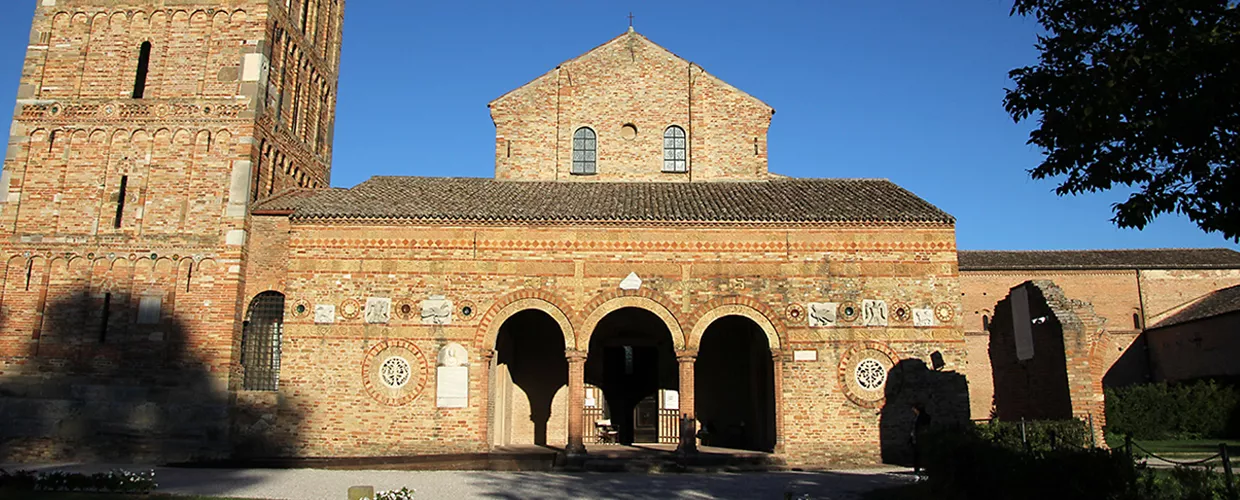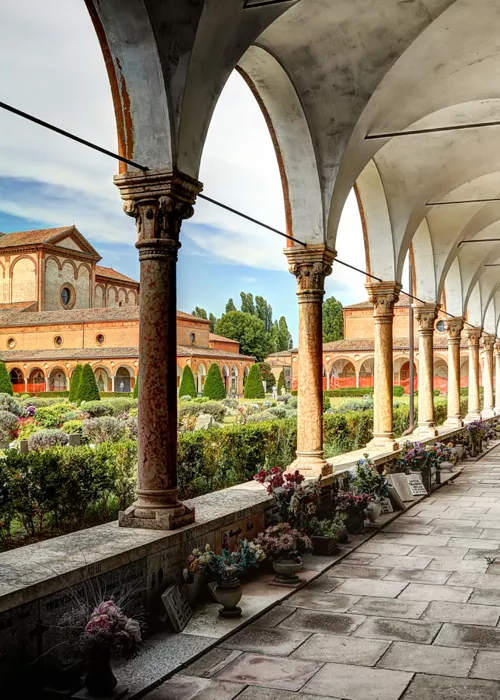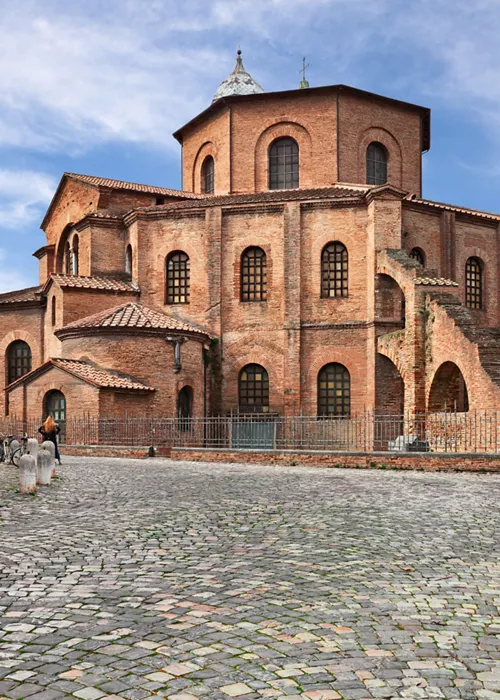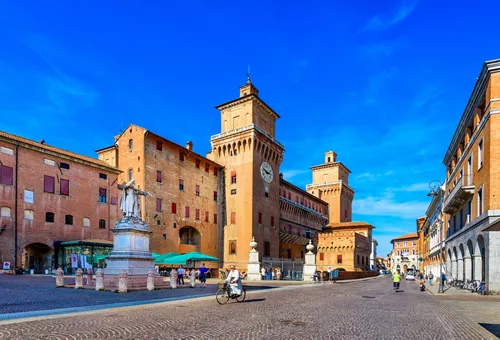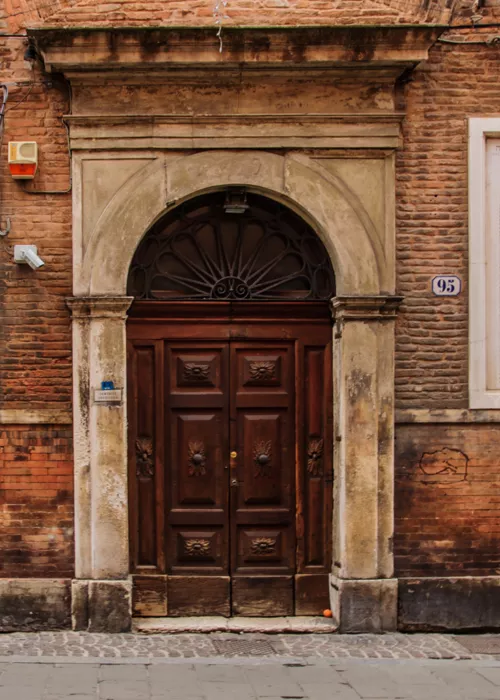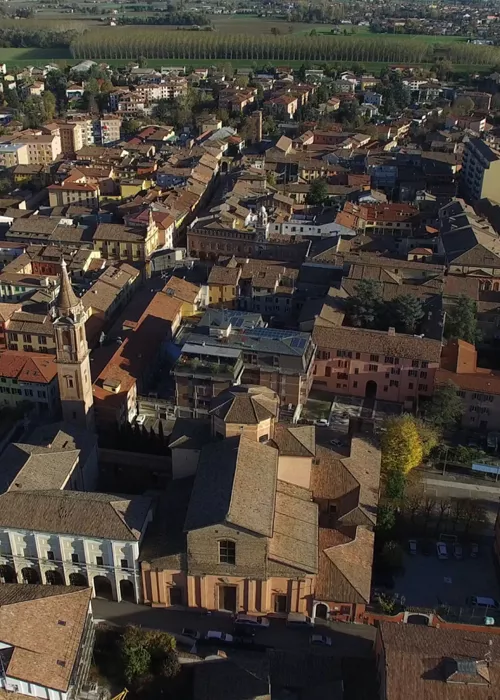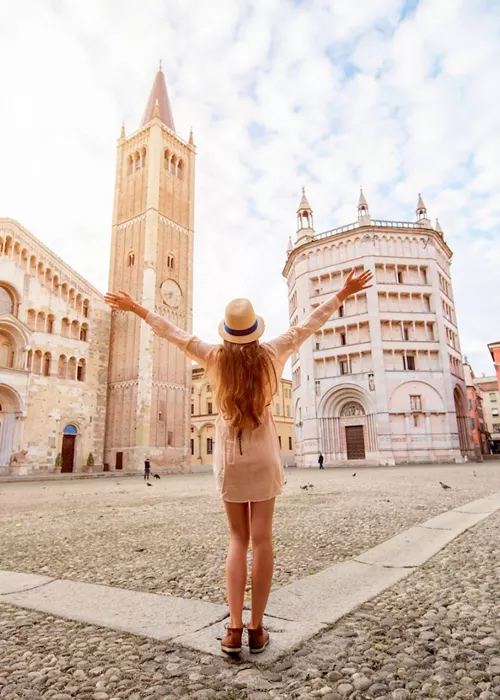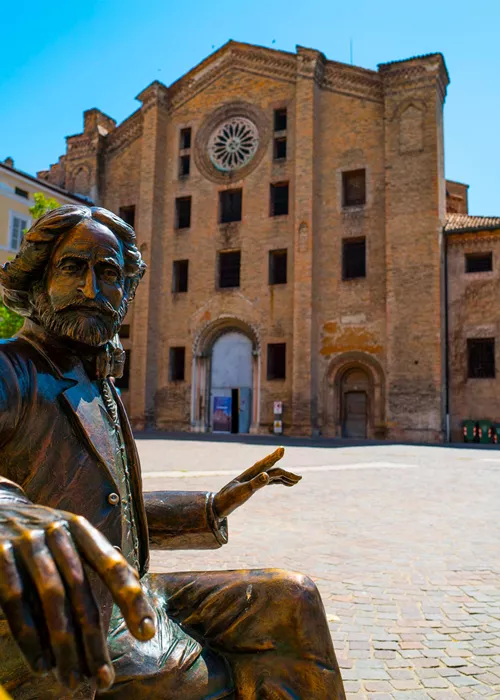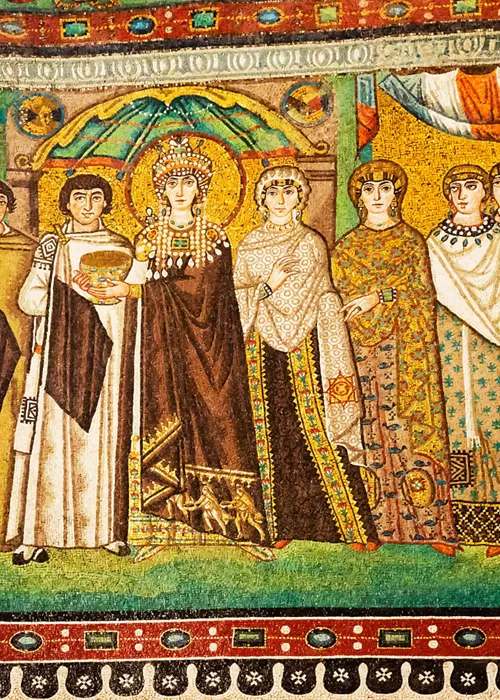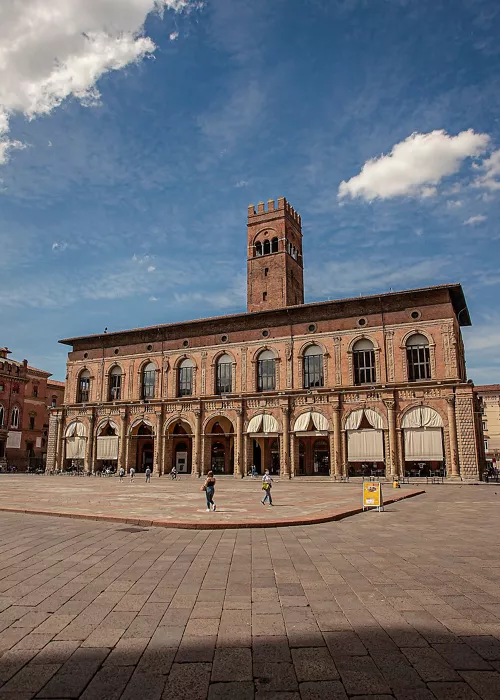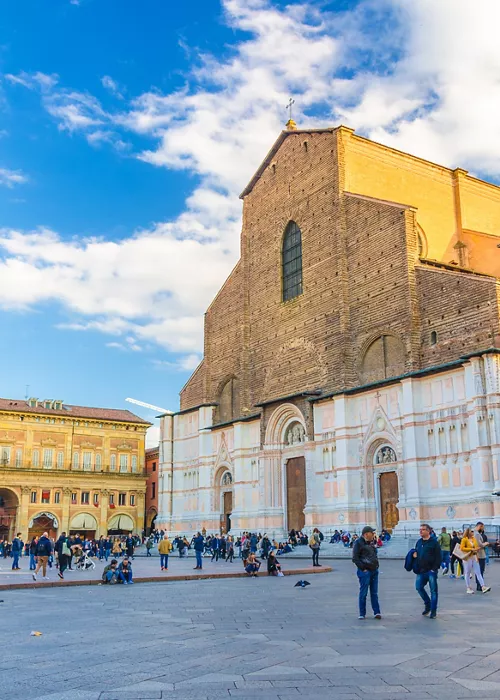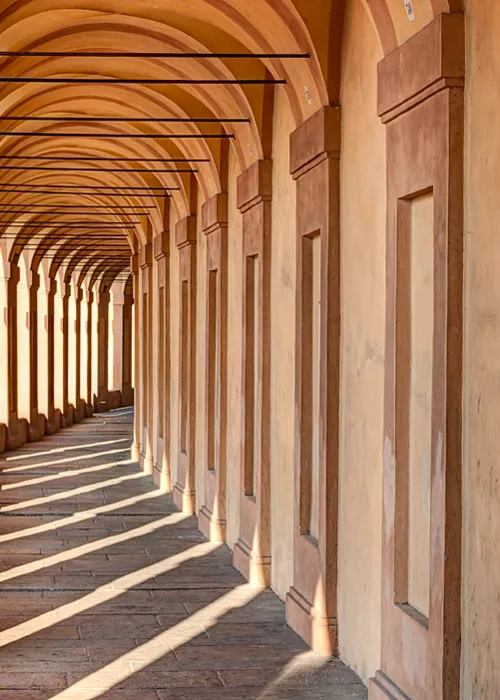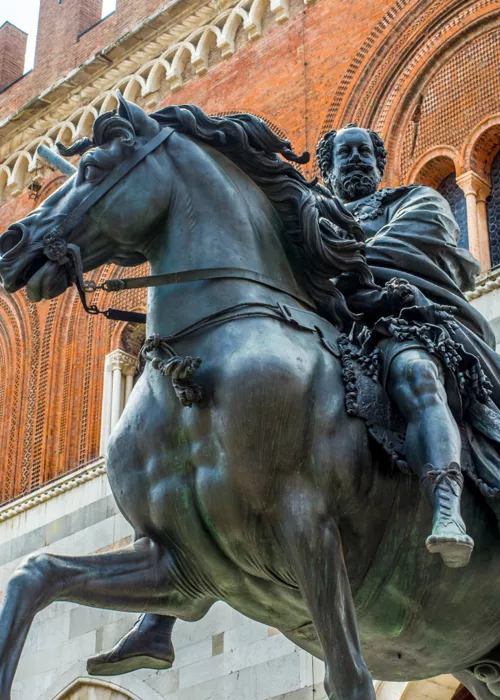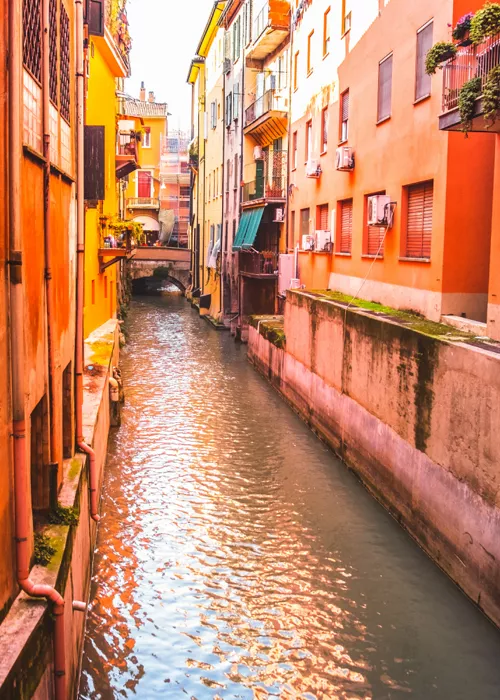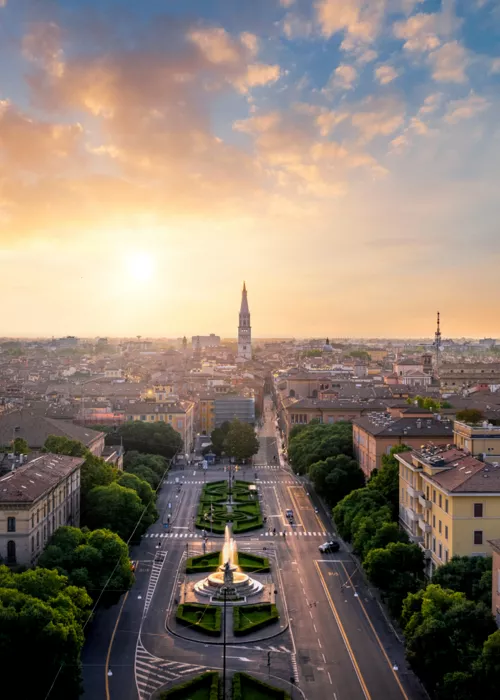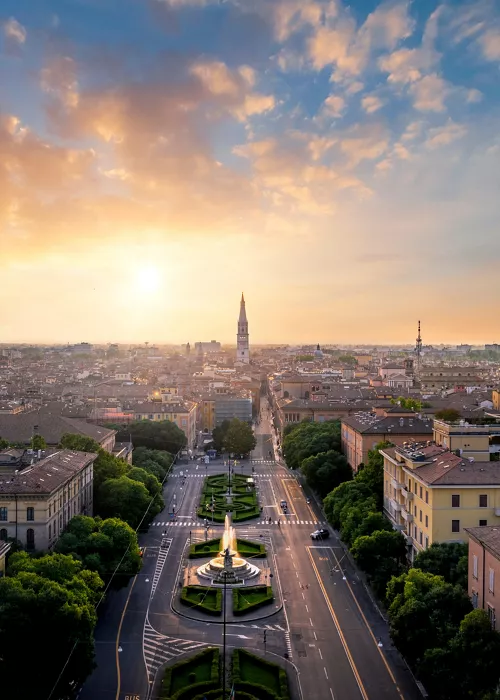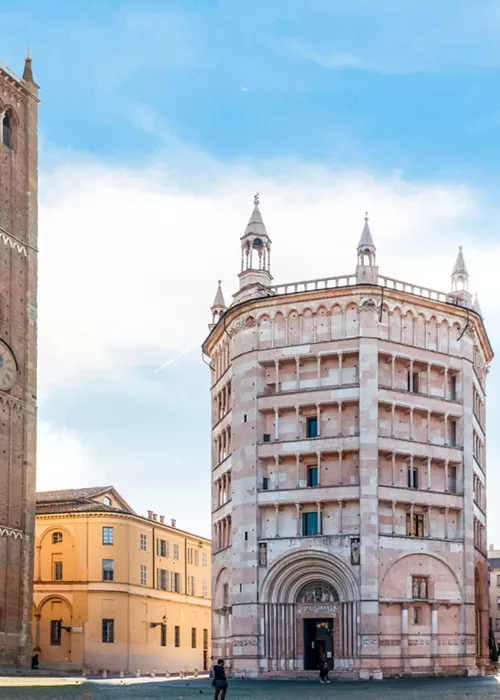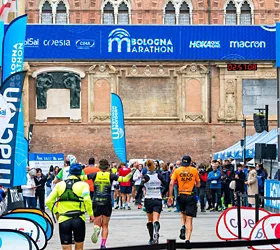A glimpse of the Middle Ages, Pomposa Abbey
The unmistakable bell tower rises boldly along the Po di Volano
Pomposa Abbey is one of the most important monastery complexes of the Italian Middle Ages: the Romanesque church with its magnificent bell tower; the Benedictine monastery, the Palazzo della Ragione (Court of Law) where the abbot administered justice... The complex is immersed in a landscape that still gives a good idea of its ancient isolation in the expanses of the Po Delta. Its location, at the crossroads of two historical routes, is revealing: from North to South, the Via Romea at that time was followed by merchants and pilgrims on their way to the Eternal City; from West to East, the road from Ferrara followed what was then the main branch of the Po Delta towards the Adriatic Sea. At that time the coast was not far away. Today, however, the river still flows for about ten kilometres through alluvial lands as far as Volano, an ancient fishing village, and Lido di Volano, the first of the seven Lidi (beach resorts) di Comacchio.
Why it is special
The Basilica of Santa Maria is one of those monuments that can take the visitor back in time. Passing through the colonnaded atrium, we are plunged into the half-light of the three large naves: Roman and Byzantine columns, reminiscent of Ravenna; floors with inlays of precious marbles depicting vegetation and animals; 14th-century frescoes with scenes from the Old and New Testaments, culminating in the apse with Christ in Majesty with Angels and Saints... Then we move into the monastery, which is also extensively frescoed: from the Chapter House, where the monks' assembly was held, to the Refectory, where they ate their meals in silence, listening to passages from the Bible. One image stands out: the "Deesis", a composition in the Byzantine tradition, with the Redeemer between the Madonna and the Baptist, here accompanied by St Benedict, founder of the Order in the year 529, and St Guido, Abbot of Pomposa from 998 to 1046.
Not to be missed
An outstanding feature of the abbey is the bell tower: first for its considerable height, 48 metres, and secondly for the grandeur of its Romanesque architecture. The building of the bell tower dates back to the year 1063 and is the work of an architect called Deusdedit ("God has given" in Latin). He was probably a religious man, and his name is engraved on a slab at the base of the bell tower. What is most noteworthy is the sequence of openings, progressively more numerous, that mark the brick structure: single-, double-, three- and four-light windows, to make the structure lighter and at the same time to make it easier for the bells to propagate their sound. Two hundred and one are the steps leading up to the belfry, a climb that is rewarded by an extraordinary view over a wide stretch of the Delta. There are four modern bells, harmonised in G B and still operated manually by bellringers.
A bit of history
The first monastic settlement dates back to the 6th-7th centuries, in the Lombard era: it was then a simple chapel, around which a Benedictine community began to develop. On the oldest maps there is the indication "Insula Pomposiana", to signify that the abbey actually stood, like a triangular island, on the wooded area designed by the waters of two branches of the Po, Goro and Volano, and the coast of the Adriatic Sea. The cultivation of that “island” was the first source of wealth for the Benedictines of Pomposa, which then became a renowned centre of culture thanks to the amanuensis monks who dedicated their lives to the copying of manuscripts. Having risen to the rank of abbey in the 9th century, it reached the peak of wealth in the 12th, then experienced a slow decline, due to unstoppable environmental changes, until its suppression in the Napoleonic era. Reclaimed by the Italian State at the end of the 19th century, it is now a parish of the Archdiocese of Ferrara-Comacchio, whose archbishop bears the honorary title of Abbot of Pomposa.
Good to know
The frescoes in the basilica of Santa Maria find their worthy completion in the counter façade, with a representation of the Last Judgement. Looking at those images, some of which are truly impressive, it is easy to think of their impact on the faithful who gazed upon them in past times. One of them was Dante Alighieri, who often travelled along the Via Romea, especially when he lived in Ravenna. He stopped at Pomposa also in the summer of 1321, on his way to Venice as ambassador of the Da Polenta family. This turned out to be his last journey, because on his way back he was struck down by the malarial fever that led to his death in September of that same year. But the Abbey of Pomposa is mentioned in The Divine Comedy, in Paradise, when he meets St. Pier Damiani, who lived there in the mid 11th century: “Nostra Donna in sul lito adriano”, Our Lady on the Adriatic seashore.
Credit to: TIEGHI MAURIZIO



